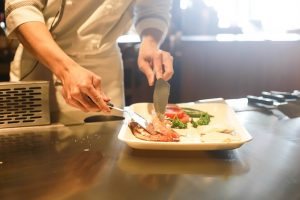Food security describes the correct practice of saving and preparing food in order to prevent foodborne disease. Food security guidelines are important to guarantee the health of customers, take full advantage of the durability of your food, and establish appropriate danger management procedures. Follow these restaurant food security pointers to keep your consumers safe and returning for more of your offerings.
1. Wash Hands Frequently
For optimum food security, it is basic that all clean workers hands before managing and preparing food and when moving in between jobs. Wash completely with soap and warm water for a minimum of 20 seconds.
2 . Sterilize Surface areas
Sterilizing and cleaning up all surface areas, consisting of prep places, cutting boards, devices, storage places, garbage cans, and flooring drains pipes, need to be an essential part of your food security program. This procedure eliminates food residue, dirt, and unnoticeable bacteria from surface areas that might come in contact with food.
Carry out and develop sanitation treatments for workers to follow on a day-to-day, weekly, and month-to-month basis.

- Scrape and clear the place of particles or staying food.
- Next, clean the surface area with hot soapy water.
- To prevent chemical contamination, wash the surface area with water and a clean fabric.
- Clean the place with a sterilizing clean or another expert sanitizer.
- Allow the place to air dry.
3. Wash Fruits and Veggies
All vegetables and fruit should be completely cleaned to eliminate any germs and dirt that might be on your fruit and vegetables.
4. Prevent Cross-Contamination
When damaging germs, irritants, or other bacteria transfer from one thing to another inadvertently, cross-contamination takes place. Frequently unnoticeable to the human eye, the result of this procedure can be lethal or incredibly harmful to unwary customers.
Aside from hand-washing, it’s also needed to use different items when dealing with different types of food items. Use different cutting boards and different receptacles for raw meats, veggies, and produce, and prepared foods.




